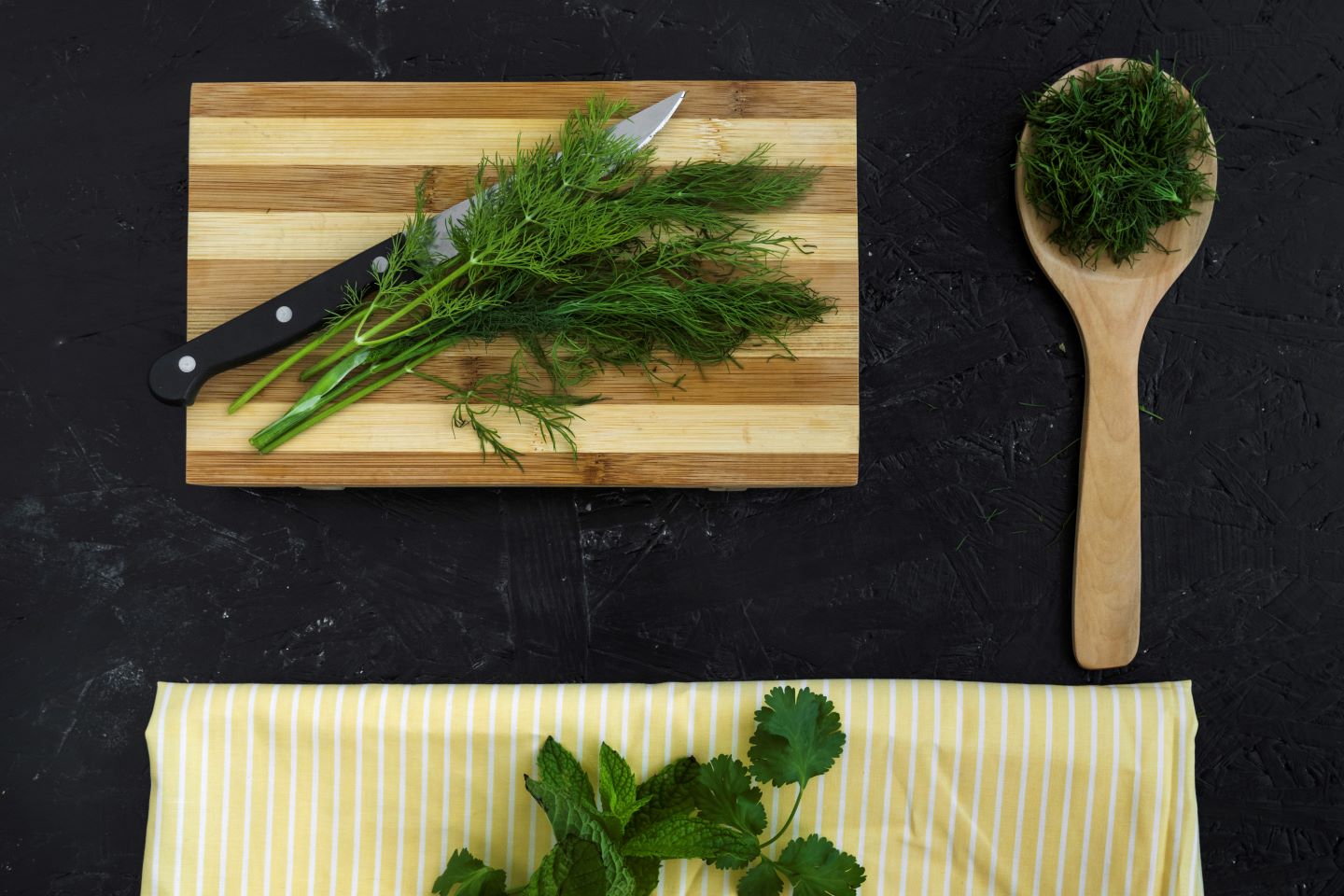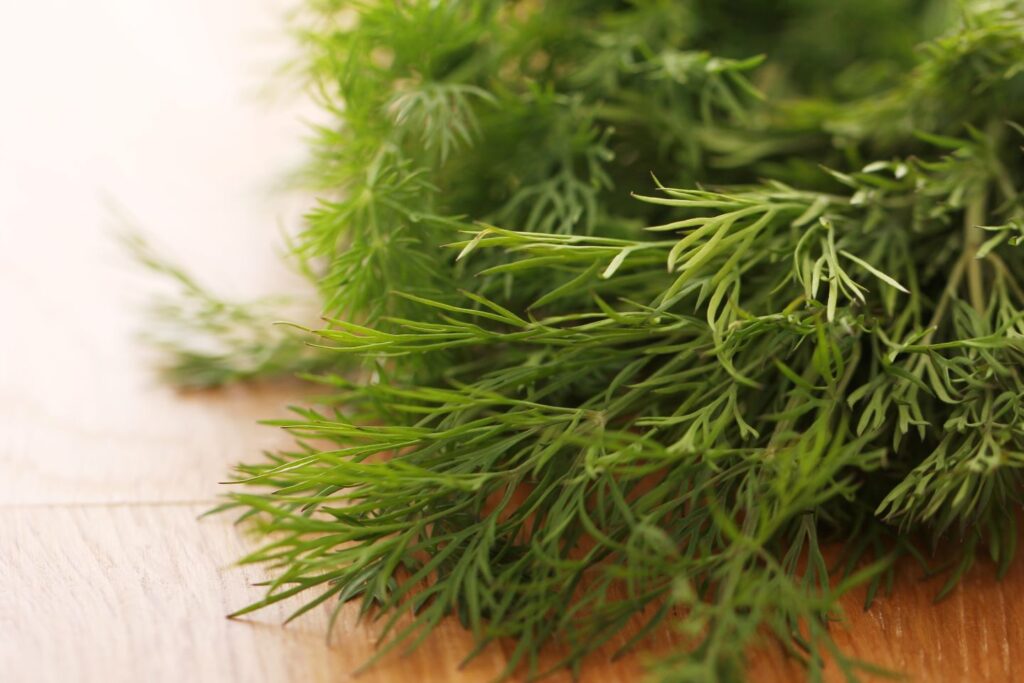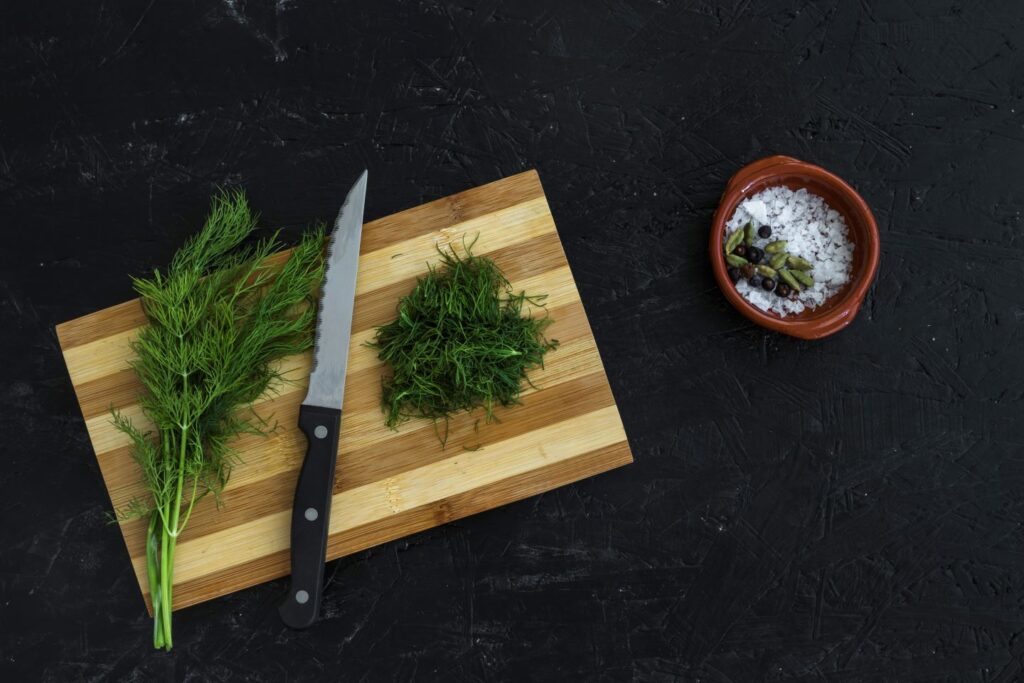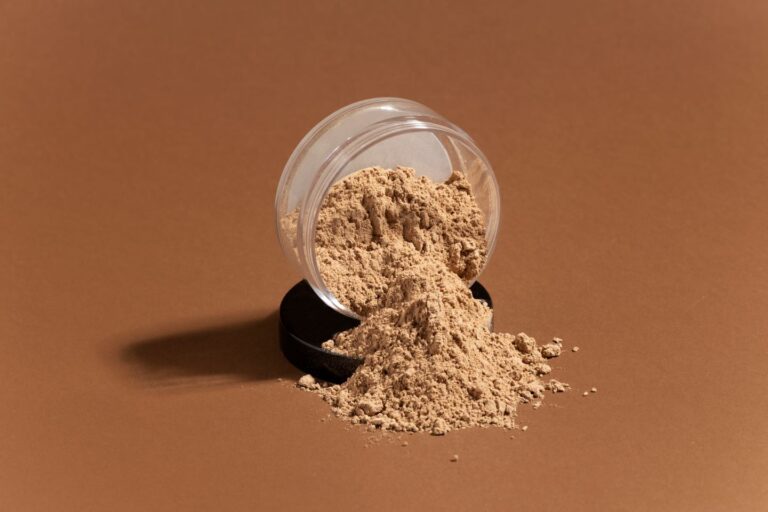Is Dill Weed the Same as Dill? Key Differences

Scientifically called Anethum graveolens, dill is a multipurpose herb grown and utilized for ages in culinary and medical contexts. The entire plant, including its leaves, seeds, and stems, is called “dill.” Still, when we talk about “dill weed,” we mean the delicate, feathery leaves of the dill plant. In this article we will dive into Is dill weed the same as dill.
The Dill Plant: An Overview
Dill belongs to the Apiaceae family, which comprises celery, parsley, and carrots. Although it originated in Southern Russia and the Mediterranean region, this annual herb is now grown and valued throughout. Dill is a favorite in many culinary traditions, distinguished by its delicate, fern-like leaves and unique aroma.
Dill Leaves: The Delicate Dill Weed
The delicate, feathery leaves of the dill plant are specifically referred to as “dill weed.” These vivid green leaves offer a distinct flavor profile that combines sweetness, freshness, and a trace of licorice or anise. Fresh dill weed adds a flavorful pop and aromatic scent to various recipes.
Uses of Dill Weed in Cooking:
- Spice: Dill weed is a well-liked spice for a variety of foods. Its zesty, fragrant flavor goes well with salads, shellfish, and chicken. It is a typical component of marinades, sauces, and dressings.
- Pickling: A crucial ingredient in the pickling process is dill weed. Fresh dill leaves add flavor and visual appeal to the brining solution when creating dill pickles or other pickled vegetables.
- Garnish: Dill weed looks good on various foods because of its feathery texture. When sprinkled over creamy dips, stews, and soups, it offers a hint of freshness.
- Breads & Savory Baked products: Dill weed can be used for bread and savory baked products to provide an additional flavorful layer. Savory muffins or bread laced with dill are delicious alternatives.
Is Dill Weed Good for You?
Yes, dill weed is good for you! It offers a variety of health benefits due to its nutritional content and medicinal properties. Here are some of the ways dill weed can contribute to your health:
Nutritional Benefits
- Vitamins and Minerals: Vital vitamins like A and C, which are critical for healthy skin, eyesight, and immunity, can be found in dill weed. Additionally, minerals like iron and manganese, which are essential for metabolism and oxygen transport, are present.
- Antioxidants: Flavonoids and monoterpenes are two of the many antioxidants found in dill. By shielding your cells from the harm that free radicals can do, these substances may lower your chance of developing some chronic illnesses.
Medicinal Properties
- Digestive Health: Dill has long been used as a digestive aid. It can assist in easing mild digestive issues, including gas and bloating. The dill’s essential oils may aid the digestive process, promoting bile and digestive juices.
- Antimicrobial Effects: According to some research, dill weed may prevent the growth of specific bacteria, fungi, and yeast. Both food preservation and potential immune system assistance may benefit from this.
- Bone Health: The calcium found in dill weed is essential for maintaining healthy bones and preventing osteoporosis. Regularly eating calcium-rich foods like dill can help keep bones strong and healthy.
- Anti-inflammatory Properties: Dill may include chemicals that have anti-inflammatory properties. These properties could lower the risk of diseases linked to chronic inflammation.
- Heart Health: While further research is required, certain of the constituents of dill, like fiber, may assist in regulating cholesterol levels and hence promote cardiovascular health.
How to Include Dill Weed in Your Diet?
Dill weed is exceptionally adaptable and straightforward to incorporate into your diet. Here are some recommendations:
- Salads: A sprinkle of fresh dill weed gives a salad a taste boost.
- Soups & Stews: Add dill weed toward the end of cooking in soups and stews to add a fresh flavor.
- Yogurt Dips: To make a tasty and nutritious dip, mix yogurt, garlic, and dill weed.
- Fish & Seafood: Dill tastes great in meals that include fish and seafood.
- Egg Dishes: To add flavor to scrambled eggs, omelets, or quiches, sprinkle dill weed on top.

Beyond the Leaves: Dill Seeds and Stems
Although the term “dill weed” only applies to the leaves, the dill plant also yields seeds and stems that can be used in cooking.
Dill Plant Seeds:
Small and oval-shaped, dill seeds have a unique flavor. They are frequently added to pickling solutions to give the brine a warm, somewhat sour taste. Dill seeds also add a distinct fragrant flavor to spice blends, such as curry powder or herb mixtures.
Roots:
Dill stems can add flavor, even though they are used less frequently than the leaves and seeds. They can be added to meals for a milder dill taste by coarsely chopping and adding them, as they are more resilient than fragile leaves. Sometimes, dill stems are added to stocks and soups, which enhances the flavor profile overall.
Medicinal and Nutritional Aspects of Dill
Dill is valued for its therapeutic qualities in addition to its culinary uses. Dill has long been used to help with digestion, soothe colic in babies, and treat respiratory problems. Dill has possible health advantages since it includes flavonoids, monoterpenes, and essential oils.
Dill has a low-calorie content but a high vitamin and mineral content. Iron, manganese, vitamin C, and vitamin A are all present. A tasty method to boost the nutritional value of your meals is to incorporate dill into your diet.
Planting and Gathering Dill
Dill is a popular choice for home gardeners because it’s a simple herb. It likes full sun and well-drained soil. Once established, dill can be grown from seeds, yielding an abundance of leaves, seeds, and stems.
Harvesting Dill Weed:
Dill weed, or dill leaves, are easy to harvest. Once the plant grows between 12-18 inches tall, you can use scissors to cut off the leaves or your fingers to prune it. Regular leaf harvesting stimulates the plant to put out new growth.
Is Dill Weed the Same as Dill Seed?
Although dill weed and dill seed are derived from the same plant (Anethum graveolens), their culinary use, flavor profiles, and plant parts differ.
Dill Weed:
- Part of the Plant: The dill plant’s lush green fronds are called dill weed. The herbaceous portion can be used either fresh or dried.
- Flavor Profile: The flavor of dill weed is subtle, sweet, and reminiscent of anise-flavored licorice. It smells good and is fresh.
- Uses in Cooking: Dill weed is frequently used in salads, sauces, soups, and vegetable dishes. To keep its flavor, it’s often added toward the end of cooking or utilized right away.
Dill Seed:
- Part of the Plant: The Dill seed is the plant’s dried fruit, mistakenly labeled a seed because of its tiny, seed-like form. When the plant flowers, it is picked, and the seeds are subsequently dried.
- Flavor Profile: Compared to dill weed, dill seed has a more robust, fragrant flavor. It can have a faint citrus aroma and is somewhat bitter.
- Uses in Cooking: Dill seeds are used in recipes, pickling, and bread baking. Because of its strong flavor, it can be cooked for extended periods, making it ideal for braised or simmering meals.
Key Differences:
- Part of the Plant: Dill seed is obtained from the dried fruit of the plant, and dill weed is the leafy portion of the plant.
- Flavor: Dill seed is more potent and tastier than dill weed, which is fresher and gentler in flavor.
- Use: Dill weed is added last to recipes or eaten raw because of its fresh, aromatic characteristics. Due to its greater strength, dill seed is utilized in recipes that call for cooking, particularly pickling.
Complementary Yet Distinct:
Dill weed and dill seed are not interchangeable in cooking, even though they originate from the same plant and have specific flavoring components. Each adds a distinct flavor profile and is selected according to the recipe’s intended result. Chefs and home cooks prize both types of dill for their ability to complement a broad range of foods, from the powerful and subtle flavor of dill seed in substantial stews and pickled vegetables to the gentle and herbaceous touch of dill weed in delicate sauces and salads.

Conclusion: Is Dill Weed the Same As Dill?
In summary, when we discuss “dill,” we discuss a versatile herb with various culinary and medical uses. With its delicate leaves, dill weed is a culinary treat that adds a depth of flavor to many different meals. Meanwhile, the culinary scene benefits from the distinct features that dill seeds and stems bring.
Including dill weed in your diet offers several culinary and nutritional benefits, such as improved digestion and potential antibacterial properties. Like any herb, it provides the most benefit when incorporated into a varied, well-balanced diet. Enjoy the unique, fresh flavor of dill weed while taking advantage of its therapeutic and nutritious attributes. The term “dill” refers to the entire plant, including its leaves, seeds, and stems. However, when we specifically mention “dill weed,” we are referring to the delicate, feathery leaves of the dill plant, which are rich in nutrition and flavor.





